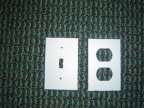Community Energy Systems’ is about where they meet. That is in the home. So it is Jam Band Friday and we need to get back to it.
( http://www.youtube.com/watch?v=lUKufZGdeXY )
This may be one of the best residential sites I have ever found and it is in Britain. Go figure. I mean if you scroll down and look at all the stuff it is pretty amazing.
http://energysavingnow.com/
I am going to focus on what is called Distributed Generation today that really emphasizes getting solar and wind out into the community.
( http://www.youtube.com/watch?v=cXE8u_HRpls )
The idea is simple lease everyone’s roofs and put generation on them.
http://www.energysavingnow.com/paper/dgindia/
DISTRIBUTED GENERATION AND ITS SOCIAL IMPACT
By Manu Avinash .G , S4, EEE, CET and
Krishna kumar .G , S4, EEE, CET
ABSTRACT- distributed generation, defined as generation located at or near the load centres, is being recognised as an environment friendly, reliable, and secure source of power which not only has minimal negative social impacts but also serves to promote social welfare. This paper aims to bring out the salient features of distributed generation from an economic and social perspective. The paper to identify the distributed resources available in India and proposes methods to tap them. It also studies the social consequences of wide spread deployment of distributed systems and their accommodation into the new liberalised energy market of India.
I. INTRODUCTION
Most of the electricity produced today is generated in large generating stations, which is then transmitted at high voltage to the load centres and transmitted to consumers at reduced voltage through local distribution systems. In contrast with large generating stations, distributed generation (DG) produce power on a customer’s site or at a local distribution network. DG technologies include
- Engines,
- Small hydro and gas turbines
- Fuel cells
- Photo voltaic systems etc
Although they represent a small share of the electricity market they play a key role for applications in which reliability is crucial, as a source of emergency capacity, and as an alternative to expansion of a local network, in developed economies where uninterrupted power supply is essential. In developing countries like India, where the generation is inadequate to meet the demand, reliability and energy security are of lesser importance. Developing country can tap the potential of DG to extend their present generation capacity in an environment friendly and cost friendly manner.
The paper is divided into two parts first part examines the various DG technologies and their merits and demerits and the second part studies the social impact of large scale deployment of small, mini and micro projects in India.
II. WHAT IS DISTRIBUTED GENERATION?
Distributed generation, is defined as generation located at or near the load centres [1]. They generate electricity through various small-scale power generation technologies. Distributed energy resources (DE) refers to a variety of small, modular power-generating technologies that can be combined with energy management and storage systems and used to improve the operation of the electricity delivery system, whether or not those technologies are connected to an electricity grid. . Projects are generally developed by either the user to avoid the purchase of power from the grid or an energy service provider who then retails the power to the site.
III. DISTRIBUTED GENERATION TECHNOLOGIES
Commercial energy technologies include:
- IC engines
- Gas turbines
- Micro turbines
- Energy storage technologies
Renewable energy technologies include:
- Fuel cells
- Solar photovoltaic
- Wind & Wave Energy
- Hydro electric energy
Some of them are discussed below:
( http://www.youtube.com/watch?v=QaKCLve_XDs )
:}
Don’t take their word for it. Pretty much everybody now agrees that it has its place in the world.
http://www.dg.history.vt.edu/ch1/benefits.html
What are the Potential Benefits of DG Systems?
Consumer advocates who favor DG point out that distributed resources can improve the efficiency of providing electric power. They often highlight that transmission of electricity from a power plant to a typical user wastes roughly 4.2 to 8.9 percent of the electricity as a consequence of aging transmission equipment, inconsistent enforcement of reliability guidelines, and growing congestion. At the same time, customers often suffer from poor power quality—variations in voltage or electrical flow—that results from a variety of factors, including poor switching operations in the network, voltage dips, interruptions, transients, and network disturbances from loads. Overall, DG proponents highlight the inefficiency of the existing large-scale electrical transmission and distribution network. Moreover, because customers’ electricity bills include the cost of this vast transmission grid, the use of on-site power equipment can conceivably provide consumers with affordable power at a higher level of quality. In addition, residents and businesses that generate power locally have the potential to sell surplus power to the grid, which can yield significant income during times of peak demand.
Industrial managers and contractors have also begun to emphasize the advantages of generating power on site. Cogeneration technologies permit businesses to reuse thermal energy that would normally be wasted. They have therefore become prized in industries that use large quantities of heat, such as the iron and steel, chemical processing, refining, pulp and paper manufacturing, and food processing industries. Similar generation hardware can also deploy recycled heat to provide hot water for use in aquaculture, greenhouse heating, desalination of seawater, increased crop growth and frost protection, and air preheating.
Beyond efficiency, DG technologies may provide benefits in the form of more reliable power for industries that require uninterrupted service. The Electric Power Research Institute reported that power outages and quality disturbances cost American businesses $119 billion per year. In 2001, the International Energy Agency (2002) estimated that the average cost of a one-hour power outage was $6,480,000 for brokerage operations and $2,580,000 for credit card operations. The figures grow more impressively for the semiconductor industry, where a two hour power outage can cost close to $48,000,000. Given these numbers, it remains no mystery why several firms have already installed DG facilities to ensure consistent power supplies
:}
As EF Schumacher said – http://en.wikipedia.org/wiki/Small_Is_Beautiful – Small IS Beautiful.
( http://www.youtube.com/watch?v=gmzN3KayWU8 )
:}


 The production of domestic hot water is one of the most beneficial and cost effective uses of thermal solar collectors. Many people would be surprised to learn how much energy and environmental impact is required for this use. Water has a “polar” molecular structure and for that reason it requires an unusual amount of energy to change its temperature. In fact, the “heat capacity” of water is about 4 times that of concrete or cast iron. It is a “year around” function that rounds out other seasonal or intermittent solar applications and improves the cost benefit or investment value of the solar heating system. In many places, solar domestic water heaters are eligible for tax credits. We include the domestic hot water heating element in nearly everything we do because it addresses important mechanical issues such as summertime heat control and heat dumping.
The production of domestic hot water is one of the most beneficial and cost effective uses of thermal solar collectors. Many people would be surprised to learn how much energy and environmental impact is required for this use. Water has a “polar” molecular structure and for that reason it requires an unusual amount of energy to change its temperature. In fact, the “heat capacity” of water is about 4 times that of concrete or cast iron. It is a “year around” function that rounds out other seasonal or intermittent solar applications and improves the cost benefit or investment value of the solar heating system. In many places, solar domestic water heaters are eligible for tax credits. We include the domestic hot water heating element in nearly everything we do because it addresses important mechanical issues such as summertime heat control and heat dumping.
 Using energy from the sun to heat water is one of the oldest uses of solar energy! Today, millions of homes and businesses around the globe use solar water heating systems because they are so cost effective!
Using energy from the sun to heat water is one of the oldest uses of solar energy! Today, millions of homes and businesses around the globe use solar water heating systems because they are so cost effective!











 AHE Featured on the Cover of the Sept/Oct 2009 Edition of Home Energy Magazine!
AHE Featured on the Cover of the Sept/Oct 2009 Edition of Home Energy Magazine!



